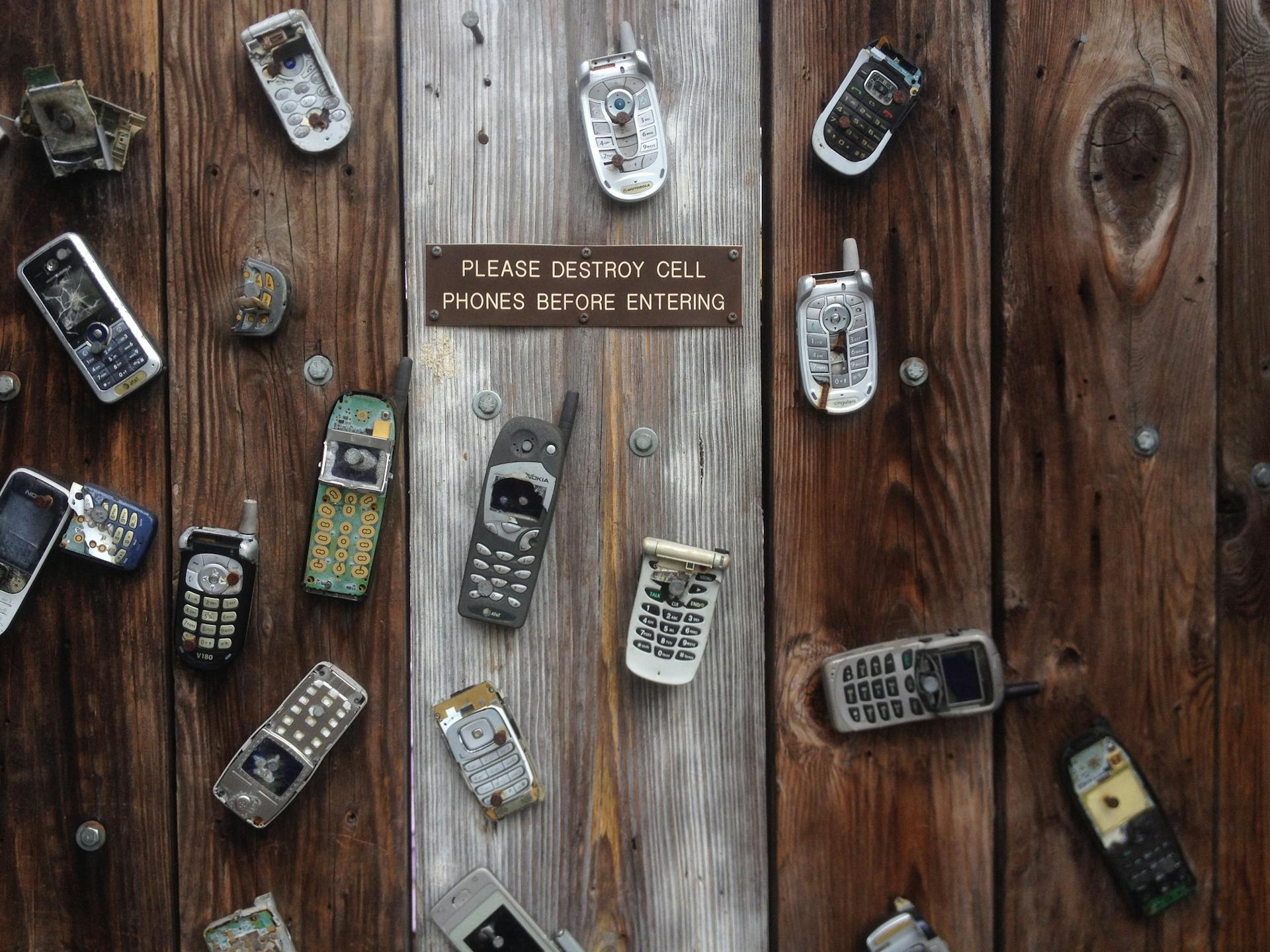Even if T-Mobile doesn’t shut down its 2G network, you should ditch your old phone for security reasons

However, you might have some relatives or friends who utilize T-Mobile‘s 2G network. Less than a week ago, although no mentions of the word “shutdown” were made, it became known that T-Mobile will most likely put the kibosh on its 2G network.
It’s only natural: AT&T put an end to its 2G network support in 2017 and Verizon did the same in 2020. T-Mobile was initially going to phase out its 2G network on April 2, but earlier this year, it decided to delay the closure.
When it hits the fan and the 2G network is no more, these relatives or friends of yours might be angry at first. It’s your job to inform them that there are some serious security risks with 2G and convince them to jump on the 4G/5G bandwagon. Heck, some even might go straight to 9G soon, but these are jet plane pilots in training!
So, let’s talk about why 2G is not safe to use. But first, some history!
2G is the real OG!
Depending on your age and experience, you might consider 3G – and 2G even more so – an ancient technology. Hold on to your hats, because there was also the 1G standard, utilized in the 1980s.
1G was the first generation of mobile networks and relied on analog transmission. This means that voice calls were transmitted using continuous radio signals rather than being converted into digital data. As a result, 1G networks had limited capacity and efficiency, which often led to dropped calls and network congestion.
The primary service offered was voice communication, with no support for text messaging or data services (duh!). Security was minimal in 1G networks, as analog signals were easily intercepted. Coverage was generally restricted to urban areas with infrastructure, leaving many rural locations with poor or no service.
In contrast, the 2G technology that emerged in the early 1990s introduced digital transmission. This advancement allowed voice signals to be converted into digital data, leading to improved sound quality and more efficient use of the radio spectrum.Digital technology also enabled 2G networks to handle a higher capacity of users simultaneously, reducing the frequency of dropped calls and congestion. A significant enhancement of 2G was the introduction of SMS (Short Message Service), allowing users to send and receive text messages.
Additionally, 2G networks supported basic data services like email and rudimentary web browsing through technologies such as GPRS (General Packet Radio Service) and EDGE (Enhanced Data rates for GSM Evolution).
To be honest, I had completely forgotten about GPRS until I began this article. This four-letter abbreviation sent me instantly back two decades ago, to the era of my beloved Sony Ericsson T610. What a nice phone! Or, maybe – just maybe – it’s the 2003-04 period that I look back to with a smile on my face, and I’m just projecting my positive emotions on the T610. Let me check… nope, the Sony Ericsson T610 was an amazing little fella!
So, 2G networks were the real deal. They marked an improvement in security with encryption for voice and text communication, making it more difficult for eavesdroppers to intercept conversations, although the encryption was not as robust as in later generations.
The 2G phones themselves were smaller and lighter compared to their 1G predecessors. That’s a major selling point for 2G right there! They offered better battery life and featured more functionalities, including address books and simple games. Coverage expanded significantly with improved infrastructure, reaching more rural areas and providing a more consistent service across various locations.
However, it’s 2024 already. Whatever improvements 2G brought along, they’re no longer applicable. On the contrary, using 2G today could be, mildly put, risky.
Let’s see why.
The security risks of sticking with 2G technology in 2024


Image source – Pexels.com
The 2G connectivity standard, while serving its purpose dutifully for over 30 years now, faces substantial vulnerabilities that make it ill-suited for today’s digital security landscape. In 2024, users relying on 2G phones are exposed to several critical security issues that can compromise their personal information, privacy, and overall safety.
Lack of encryption


Image source – Pexels.com
One of the most glaring security weaknesses of 2G technology is its inadequate encryption protocols. When 2G was developed, the focus was on establishing basic cellular communication rather than robust security measures. As a result, the encryption used in 2G networks is considered weak by modern standards.
For instance, 2G networks utilize a form of encryption called A5/1, which has long been deemed insecure. This encryption algorithm can be easily broken using modern computational techniques. Attackers with the right tools can intercept and decrypt communications, potentially exposing sensitive information like personal conversations, texts, and data transmitted over the network.
Vulnerability to eavesdropping
Due to the weak encryption and lack of advanced security features, 2G networks are particularly susceptible to eavesdropping.
Yikes!
Eavesdropping involves unauthorized access to private conversations or data transmissions. In the context of 2G, this can mean that anyone with the appropriate equipment and knowledge can listen in on phone calls or read text messages.
In 2024, this is a significant risk, as the tools and techniques for intercepting and decoding 2G communications have become more accessible and sophisticated.
No protection against rogue cell towers
Rogue or fake cell towers, also known as IMSI catchers or “stingrays,” are devices that mimic legitimate cell towers to intercept mobile communications.
With 2G, there is no robust mechanism to differentiate between legitimate cell towers and these malicious impostors. As a result, users of 2G devices are at risk of having their communications intercepted by these rogue towers. This can lead to unauthorized data collection and privacy breaches, as attackers can capture and analyze sensitive information transmitted by users’ phones.
Identity and location tracking risks


Image source – Pexels.com
2G networks are also vulnerable to identity and location tracking. In the early days of cellular technology, location tracking was not a significant concern, and therefore, 2G networks lack the advanced mechanisms needed to protect users’ location data. Attackers or malicious entities with access to 2G network data can potentially track the location of users based on their phone’s signal and other network interactions.
This, to me, is among the most serious risks with 2G. Such are the days – bad actors come in all shapes and sizes, left and right. Don’t give them the chance to literally find your whereabouts!
Insecure authentication mechanisms
Outdated and vulnerable – these are the words! In 2G systems, authentication primarily relies on a simple method called the International Mobile Subscriber Identity (IMSI) catch. This method is prone to several security issues, including interception and spoofing.
Attackers can exploit these weak authentication methods to gain unauthorized access to a user’s network services or impersonate a legitimate user.
Data theft and financial fraud risks


Image source – Pexels.com
The security weaknesses inherent in 2G technology can also lead to risks related to data theft and financial fraud. Attackers who exploit the vulnerabilities of 2G networks can gain access to personal data, including sensitive financial information.
This stolen data can be used for various fraudulent activities, such as unauthorized transactions, identity theft, and other forms of financial exploitation. With the rise of digital financial transactions and online banking, the risk of financial fraud is a significant concern for users still relying on 2G technology.
Increased risk of phishing attacks
Phishing attacks can take various forms, including fraudulent messages or calls pretending to be from legitimate institutions. The lack of security in 2G communications makes it easier for attackers to deceive users and harvest sensitive information.
That’s because as technology advances, security protocols become more sophisticated, and older systems like 2G are left behind. The obsolescence of security protocols in 2G networks means that they are not equipped to handle modern security threats and challenges.
Also, with 2G networks, there is a higher likelihood of network disruptions and vulnerabilities that can be exploited by attackers. Compromised network integrity can lead to data breaches, unauthorized access, and other security incidents that affect users’ privacy and safety.
Are you not convinced yet? Here are some more risks!


Help your loved ones get on the 4G/5G bandwagon. | Image source – Pexels.com
I’m sure you get the point already. The security risks – be it financial, or just personal – associated with sticking with 2G technology are substantial.
This doesn’t mean that all of your concerns should go away once you get your relatives/friends to switch to a 4G/5G phone. Nope, these standards could also cause you sleepless nights and major stress. Be it far from me to root for the 4G/5G standard as some sort of remedy for all of our digital ills. Nope.
However, it’s not just the above for the 2G-related risks. There’s also the chance of Man-in-the-middle (MitM) attacks (intercepting and altering communications between two parties without their knowledge); social engineering exploits (these may include impersonating trusted contacts or institutions to trick users into revealing personal details); malware and viruses; lack of support for security updates, and more.
The best part is that there’s not just the stick out there, that’s hanging over 2G users. There’s also a carrot: you can get a free 4G/5G phone if you decide to ditch 2G! Are you in for a treat?
Source link


